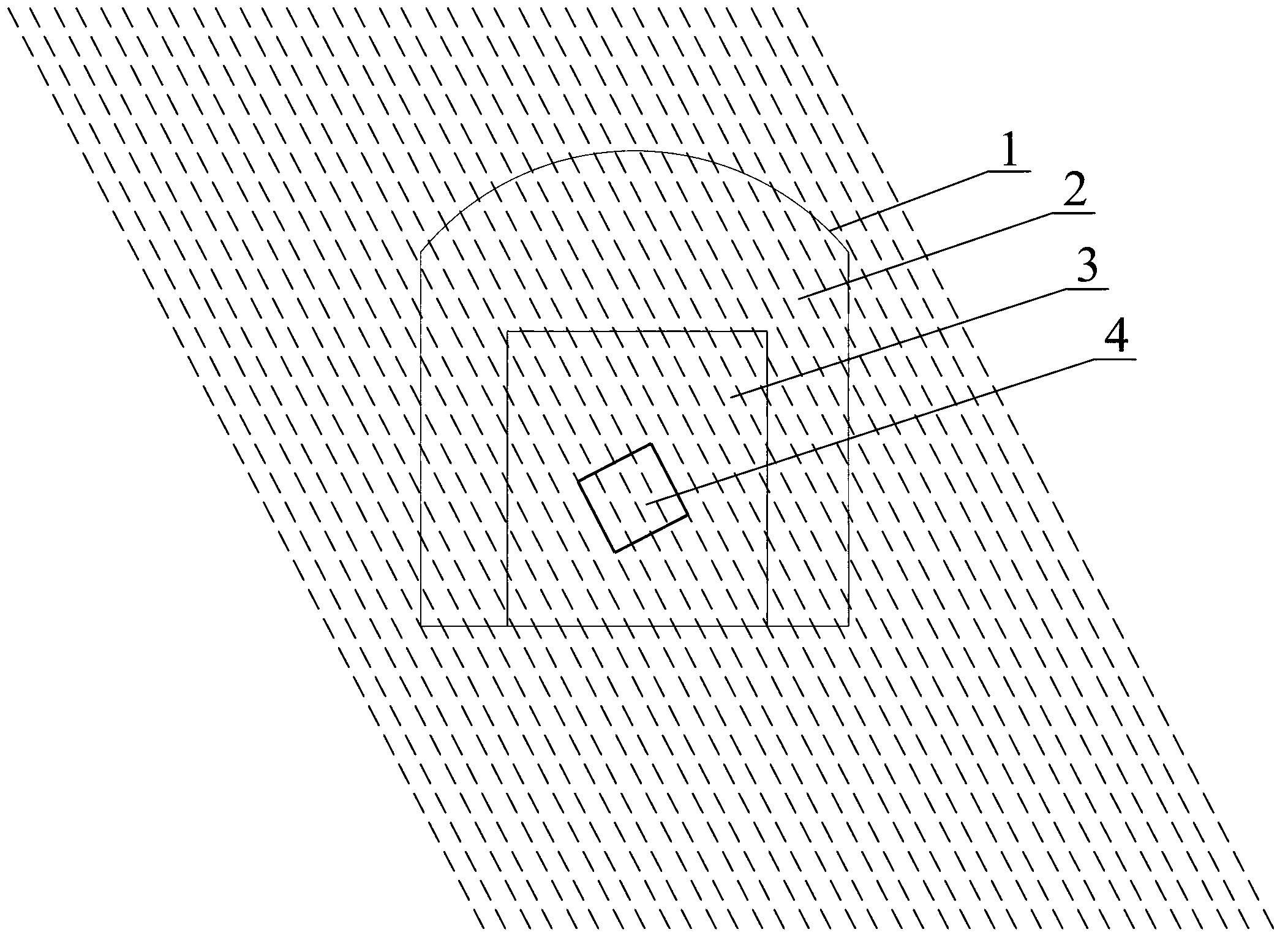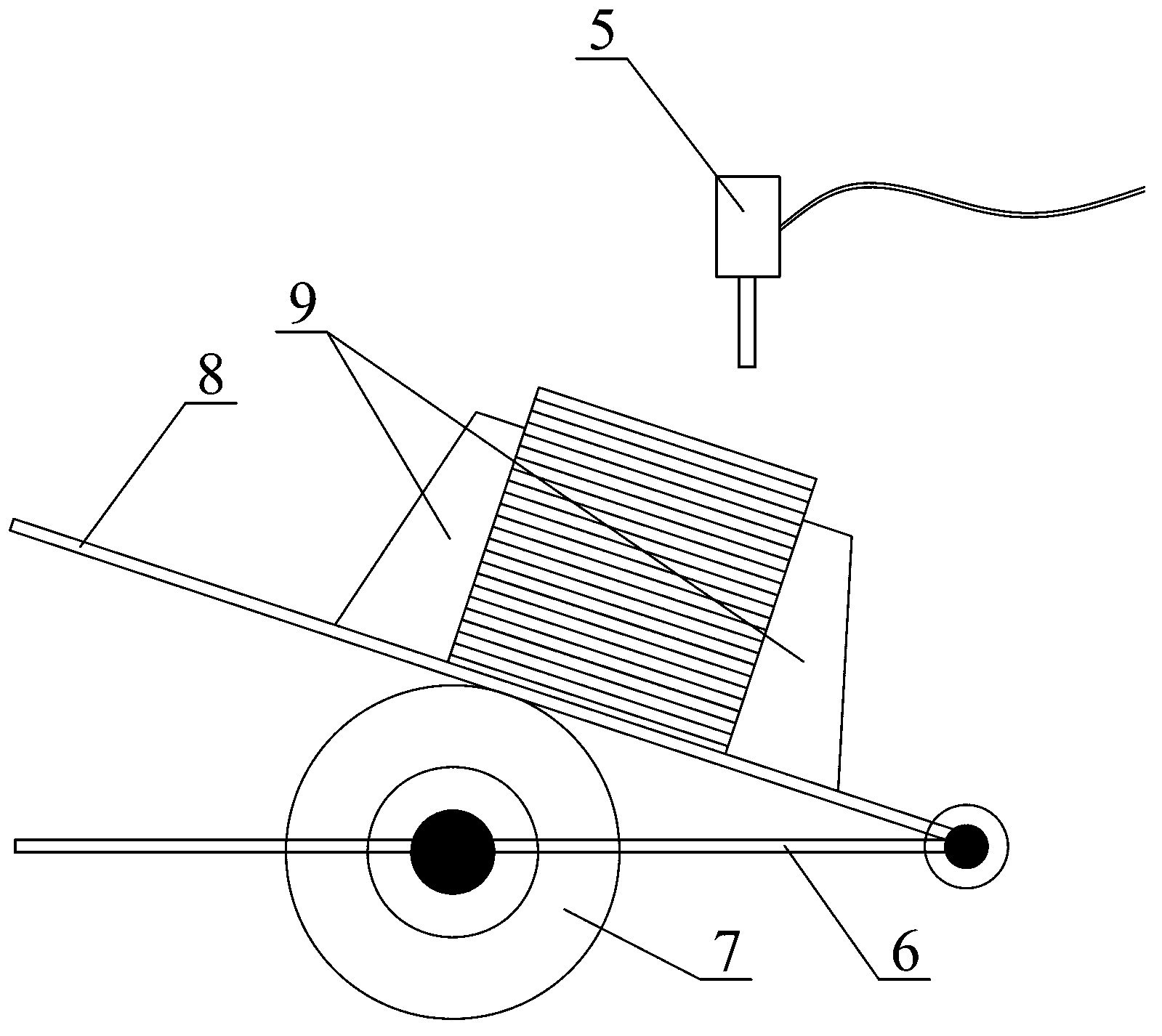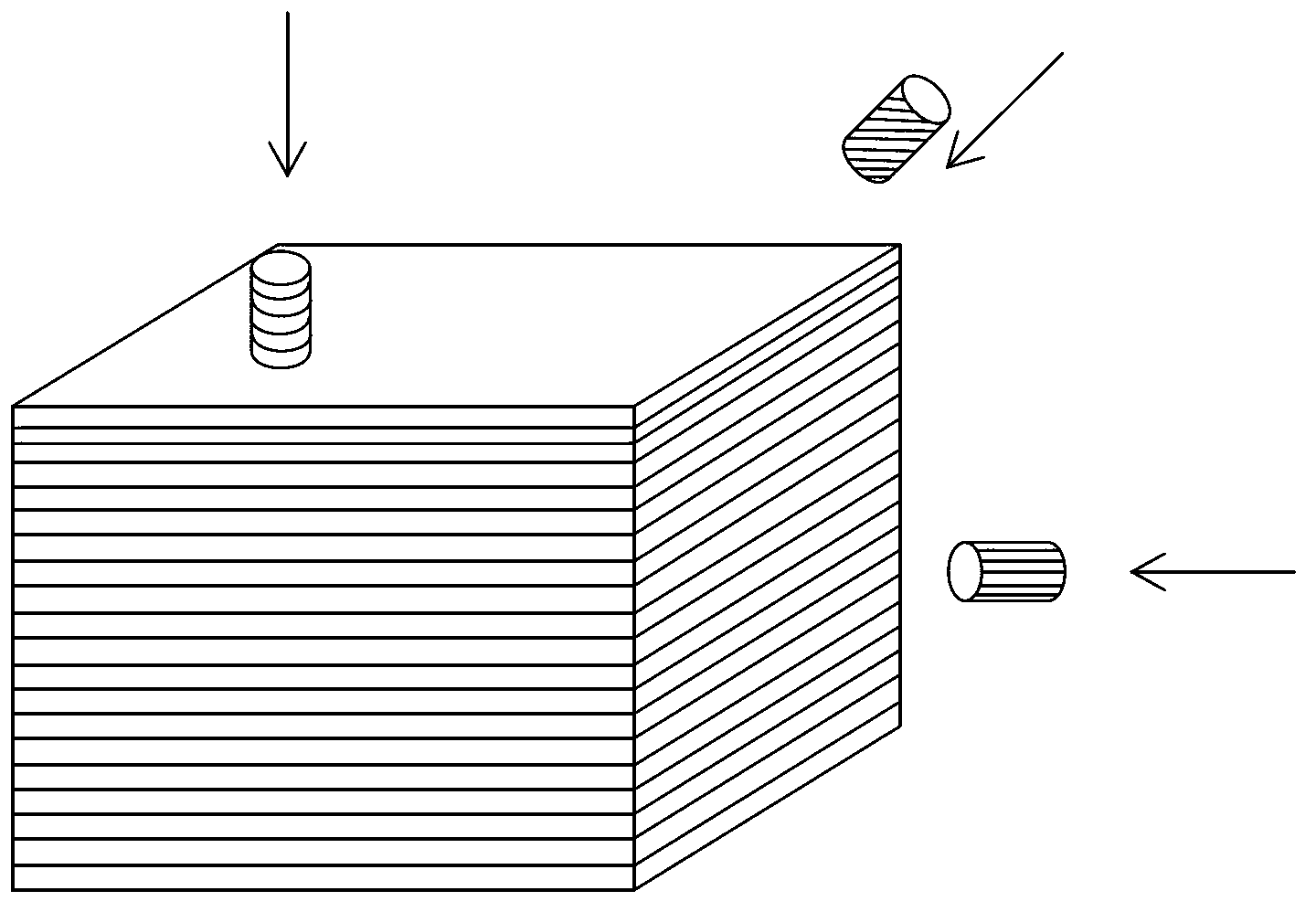Method for determining anisotropic elastic modulus of schist
A technology of elastic modulus and anisotropy, applied in the field of schist anisotropic elastic modulus measurement, can solve the problems of insufficient engineering support and collapse, and achieve the effect of reducing surrounding rock damage and excavation disturbance.
- Summary
- Abstract
- Description
- Claims
- Application Information
AI Technical Summary
Benefits of technology
Problems solved by technology
Method used
Image
Examples
Embodiment Construction
[0026] The method for determining the anisotropic elastic modulus of schist in this embodiment is characterized in that the steps are as follows:
[0027] a. Since the schist is extremely vulnerable to damage during the sampling process, the damaged rock sample is used for the test, and the measured test data cannot reflect the strength and deformation characteristics of the original rock. Therefore, this embodiment adopts non-destructive sampling technology to reduce sampling damage , the specific steps include,
[0028] a1, such as figure 1 As shown, a 3m×3m (section size) exploration hole 1 is excavated at the schist site, and its section is obliquely intersected with the schist;
[0029] a2. Excavate the peripheral rock mass 2 around the face of the exploration hole 1 to form a schist cuboid 3 arranged along the axial direction of the exploration hole 1. The length of the schist cuboid in the axial direction of the exploration hole 1 is 6m. The side length on the section...
PUM
| Property | Measurement | Unit |
|---|---|---|
| Length | aaaaa | aaaaa |
Abstract
Description
Claims
Application Information
 Login to View More
Login to View More - R&D
- Intellectual Property
- Life Sciences
- Materials
- Tech Scout
- Unparalleled Data Quality
- Higher Quality Content
- 60% Fewer Hallucinations
Browse by: Latest US Patents, China's latest patents, Technical Efficacy Thesaurus, Application Domain, Technology Topic, Popular Technical Reports.
© 2025 PatSnap. All rights reserved.Legal|Privacy policy|Modern Slavery Act Transparency Statement|Sitemap|About US| Contact US: help@patsnap.com



